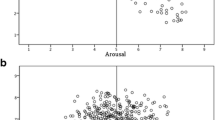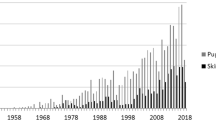Abstract
Wind turbine noise is considered to be easily detectable and highly annoying at relatively lower sound levels than other noise sources. Many previous studies attributed this characteristic to amplitude modulation. However, it is unclear whether amplitude modulation is the main cause of these properties of wind turbine noise. Therefore, the aim of the current study is to identify the relationship between amplitude modulation and these two properties of wind turbine noise. For this investigation, two experiments were conducted. In the first experiment, 12 participants determined the detection thresholds of six target sounds in the presence of background noise. In the second experiment, 12 participants matched the loudness of modified sounds without amplitude modulation to that of target sounds with amplitude modulation. The results showed that the detection threshold was lowered as the modulation depth increased; additionally, sounds with amplitude modulation had higher subjective loudness than those without amplitude modulation.
Similar content being viewed by others
References
E. Pedersen and P. Larsman, The impact of visual factors on noise annoyance among people living in the vicinity of wind turbines, J. Environ. Psychol., 28 (2008) 379–389.
R. H. Bakker, E. Pedersen, G. P. van den Berg, R. E. Stewart, W. Lok and J. Bouma, Impact of wind turbine noise on annoyance, self-reported sleep disturbance and psychological distress, Sci. Total Environ., 425 (2012) 42–51.
S. Oerlemans, P. Sijtsma and B. Méndez López, Location and quantification of noise sources on a wind turbine, J. Sound Vibr., 299 (2007) 869–883.
C. Cheong and P. Joseph, Cyclostationary spectral analysis for the measurement and prediction of wind turbine swishing noise, J. Sound Vibr., 333 (2014) 3153–3176.
G.-S. Lee and C. Cheong, Prediction and analysis of infra and low-frequency noise of upwind horizontal axis wind turbine using statistical wind speed model, AIP Advances, 4 (2014) 127117.
V. V. Lenchine, Assessment of amplitude modulation in environmental noise, Appl. Acoust., 104 (2016) 152–157.
E. Pedersen and K. P. Waye, Perception and annoyance due to wind turbine noise -a dose-response relationship, J. Acoust. Soc. Am., 116 (2004) 3460–3470.
S. A. Janssen, H. Vos, A. R. Eisses and E. Pedersen, A comparison between exposure-response relationships for wind turbine annoyance and annoyance due to other noise sources, J. Acoust. Soc. Am., 130 (2011) 3746–3753.
G. P. Van den Berg, Effects of the wind profile at night on wind turbine sound, J. Sound Vibr., 277 (2004) 955–970.
S. Lee, S. Lee and S. Lee, Numerical modeling of wind turbine aerodynamic noise in the time domain, J. Acoust. Soc., 133 (2013) 94–100.
K. Bolin, M. E. Nilsson and S. Khan, The potential of natural sounds to mask wind turbine noise, Acta Acustica., 96 (2010) 131–137.
H. Levitt, Transformed up and down methods in psychoacoustics, J. Acoust. Soc. Am., 49 (1971) 467–477.
Y. Seong, S. Lee, D. Gwak, Y. Cho, J. Hong and S. Lee, An experimental study on annoyance scale for assessment of wind turbine noise, J. Renew. Sustain. Energy, 5 (2013).
B. C. J. Moore, B. R. Glasberg and T. Bear, Model for prediction of thresholds, loudness and partial loudness, J. Aud. Eng. Soc., 45 (1997) 224–240.
B. R. Glasberg and B. C. J. Moore, Development and evaluation of a model for prediction the audibility of timevarying sounds in the presence of background sounds, J. Audio Eng. Soc., 53 (2005) 906–918.
B. C. J. Moore and B. R. Glasberg, A revision of Zwicker’s loudness model, Acta Acustica., 82 (1996) 335–345.
B. R. Glasberg and B. C. J. Moore, A model of loudness applicable to time-varying sounds, J. Audio Eng. Soc., 50 (2002) 331–342.
K. P. Waye and E. Pedersen, Psycho-acoustic characters of relevance for annoyance of wind turbine noise, J. Sound Vibr., 250 (2002) 65–73.
E. Pedersen, F. van den Berg, R. Bakker and J. Bouma, Response to noise from modern wind farms in the Netherlands, J. Acoust. Soc. Am., 126 (2009) 634–643.
H. Gockel, B. C. J. Moore and R. D. Patterson, Asymmetry of masking between complex tones and noise: Partial loudness, J. Acoust. Soc. Am., 114 (2003) 349–360.
World wind energy report 2010, Reports of the World Wind Energy Association, WWEA (2011).
K. Yoon, D. Gwak, S. Lee and S. Lee, The effect of amplitude modulation on the detection threshold of wind turbine noise, Proceedings of the 4th Asia-Pacific Forum on Renewable Energy, AFORE, Yeo-su, Republic of Korea (2015).
Author information
Authors and Affiliations
Corresponding author
Additional information
Recommended by Associate Editor Cheolung Cheong
Soogab Lee is a Professor in the Department of Mechanical and Aerospace Engineering at Seoul National University. He received his Ph.D. in Aeronautics and Astronautics from Stanford University in 1992. He worked as a Research Scientist at NASA Ames Research Center from 1992 to 1995. His research interests are in the area of aerodynamics and acoustics of rotating machines including wind turbine systems.
Kiseop Yoon is a Ph.D. student in the Department of Mechanical and Aerospace Engineering at Seoul National University. He received his B.S. degree from the School of Mechanical and Aerospace Engineering at Seoul National University in 2011. His research interests are in the area of active noise control system and the perception of environmental noise.
Doo Young Gwak is a Ph.D. student in the Department of Mechanical and Aerospace Engineering at Seoul National University. He received his B.S. degree from the School of Mechanical and Aerospace Engineering at Seoul National University in 2010. His research interests are in the area of psychoacoustics and the prediction of ‘drone’ noise.
Yeolwan Seong is a Researcher in the Defense Agency for Technology and Quality at Daejeon. He received his M.S. degree from the School of Mechanical and Aerospace Engineering at Seoul National University in 2013. His research interests are in the area of psychoacoustics and railway noise.
Seunghoon Lee is a Researcher in the Korea Aerospace Research Institute at Daejeon. He received his Ph.D. degree from the School of Mechanical and Aerospace Engineering at Seoul National University in 2014. His research interests are in the area of helicopter aerodynamics and wind turbine noise.
Jiyoung Hong is a Researcher in the Korea Railroad Research Institute at Uiwang. She receive her Ph.D. degree from the School of Mechanical and Aerospace Engineering at Seoul National University in 2011. Her research interests are in the area of human noise perception and environmental noise impact assessment.
Rights and permissions
About this article
Cite this article
Yoon, K., Gwak, D.Y., Seong, Y. et al. Effects of amplitude modulation on perception of wind turbine noise. J Mech Sci Technol 30, 4503–4509 (2016). https://doi.org/10.1007/s12206-016-0918-7
Received:
Revised:
Accepted:
Published:
Issue Date:
DOI: https://doi.org/10.1007/s12206-016-0918-7




